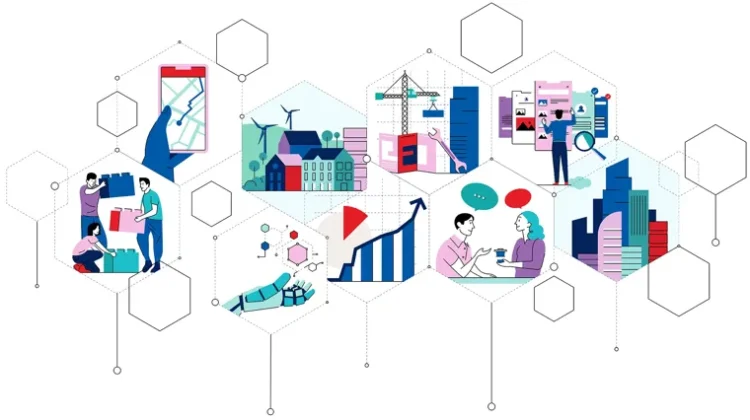
AI is already having an impact on the design of global cities and infrastructure – with more than a third of engineers, architects and city planners relying on it daily, a new survey commissioned by global sustainable development consultancy Arup has revealed.
The research shows that professionals across the built environment sector are using advanced AI tools far beyond chatbots and large language models such as ChatGPT. And more than 80 per cent are using the technology at least weekly.
Embracing AI: Reshaping Today’s Cities and Built Environment examines attitudes and adoption of AI by those shaping our cities across ten countries: Australia, Brazil, China, Germany, India, Indonesia, Nigeria, Singapore the UK and the USA.
The survey asked engineers, architects, city planners and digital leaders in the built environment how they are using AI. They reported using advanced tools such as large-scale simulations, evolutionary algorithms and science-based AI to tackle complex project work. These AI-powered solutions are being used across work including project design, advanced modelling, urban planning, creating digital twins and enhancing sustainability and energy efficiency.
The survey found overwhelmingly positive attitudes towards AI, with almost two-thirds (61 per cent) seeing it as an opportunity. Only 11 per cent see it as a risk to jobs.
Many respondents believe that AI can help projects be delivered on time and on budget, while also helping to tackle the climate and nature crises – citing solutions such as waste reduction, developing sustainable materials and optimising renewable energy.
The vast majority of professionals (91 per cent) believe it’s important to have ethical guidelines for AI in the built environment. Around half (49 per cent) also reported apprehension about the dominance of global tech companies in AI development.
According to Arup, it commissioned the research to explore how AI is already changing the way cities and infrastructure are designed. The firm is calling for increased focus on developing AI tools that can help decarbonise the sector and restore nature, while delivering prosperity and resilient infrastructure for a growing global population. In 2024, there was US$252billion of corporate investment in AI in total. Arup’s AI experts argue that if just ten per cent of this investment was used to design AI for major challenges in the built environment, it could help radically transform cities and infrastructure to improve people’s lives.
Arup is already using AI-powered tools to model nature-based solutions that protect people from heatwaves and floods, and to extend the life of critical infrastructure such as offshore wind turbines and bridges for decades – significantly reducing cost and carbon emissions.
‘This survey shows the scale and pace of AI adoption in the design of cities and infrastructure, cutting through the noise around large language models such as ChatGPT to show how advanced AI systems can improve people’s lives,’ said Will Cavendish, global digital services leader at Arup and ex-DeepMind strategist. ‘AI is already making a significant impact – empowering what we call “total design” and helping deliver everything from renewable energy infrastructure to transport systems.
‘While global investment in AI is enormous, it often misses the most impactful areas,’ he continued. ‘We need AI that delivers real-world benefits – from new sustainable materials to renewed global biodiversity. Our industry should focus much more resources on developing these types of AI systems.’
The results of the survey can be found here.


